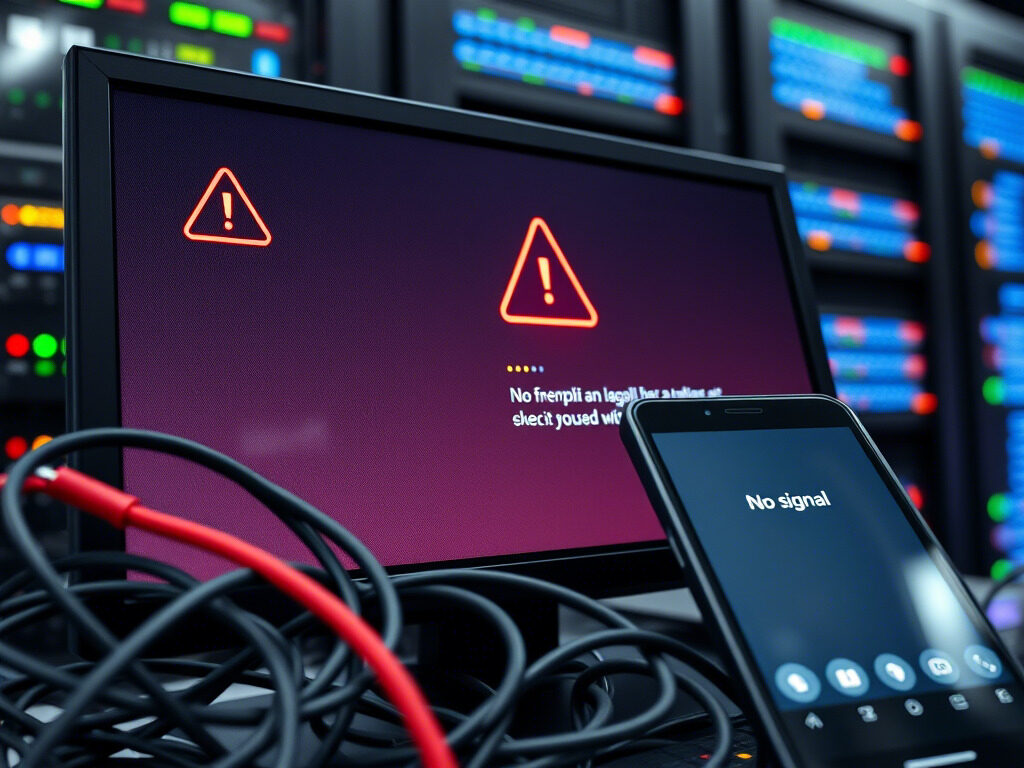Providing scalability, adaptability, and cost efficiency, cloud computing has changed how companies run. Even the best cloud providers, meanwhile, are not exempt from cloud service outages, which cause operational interruptions, lost income, and unhappy customers.
Many things can cause a cloud outage: server faults, network problems, malware, or even human mistakes. Although complete elimination of service interruptions is unattainable, companies can minimise effect and downtime with the correct plan.
This tutorial will lead you through how to properly manage a cloud service outage and make sure your company stays strong in the face of disturbance.

What Causes a Cloud Service Outage?
A cloud service outage can occur for several reasons, including:
- Network Failures: Problems with data centre networking or internet access.
- Server Crashes: Faulty or overloaded cloud servers.
- Cybersecurity Attacks: Malware degrading cloud performance, hacking efforts, or DDoS assaults.
- Human Mistakes: IT staff misconfigurations or unintentional removals.
- Cloud Provider Downtime: Maintenance or technical issues by the cloud provider.
A few minutes of cloud provider downtime can create operational mayhem since companies depend quite much on cloud-based apps. The secret is to react swiftly and effectively.
Step-by-Step Guide to Handling a Cloud Service Outage
Step 1: Confirm the Outage
Before assuming a service disruption, verify the issue:
- Most cloud providers feature live status dashboards; check the status page of your cloud provider (AWS, Google Cloud, Azure, etc.).
- Test Various Networks & Devices to be sure the problem is not specific to your company’s internet connection.
- Apply Tools for Downtime Monitoring—Tools like UptimeRobot, StatusCake, or Pingdom can verify whether the service is offline worldwide.
If the cloud downtime is confirmed, move to the next step.
Step 2: Assess the Impact
Identify how the cloud service outage is affecting your business:
- Which services are down? (Emails, databases, applications)
- How many users/customers are impacted?
- Is there a workaround to continue business operations?
Knowing the extent of the outage helps prioritise actions and keep stakeholders informed.
Step 3: Communicate with Your Cloud Provider
Contact your cloud provider’s support team to:
- Get an estimated resolution time.
- Understand whether the issue is on their end or needs intervention from your IT team.
- Receive updates on mitigation efforts.
Most top cloud providers offer real-time updates through email, Twitter, or dedicated support channels.
Step 4: Keep Internal & External Stakeholders Informed
- Internal Teams: IT, customer support, and management should be updated regularly.
- Customers & Users: Send out notifications via email, social media, or website banners explaining the issue and estimated resolution time.
Transparency builds trust and prevents unnecessary panic among users.
Step 5: Implement Temporary Workarounds
- Switch to Backup Systems: If you have a disaster recovery plan, activate backup servers.
- Use Alternative Cloud Solutions: Some businesses use multi-cloud strategies to redirect workloads to another provider.
- Enable Offline Access: If applicable, allow users to work offline and sync data once the service disruption is resolved.
A business continuity plan ensures minimal disruption during cloud downtime.
Step 6: Monitor for Updates & Test the Recovery
- Keep monitoring updates from the cloud provider.
- Once the service is restored, test all systems before resuming full operations.
- Ensure that data integrity is intact—check for lost files, unsynced transactions, or broken APIs.
A smooth recovery ensures no long-term impact on business operations.

How to Prevent Future Cloud Service Outages?
While cloud downtime is inevitable, businesses can minimise risks with proactive measures:
1. Work with Reliable Cloud Providers
Choose top-tier cloud providers with a strong track record in uptime and reliability.
2. Set Up Automated Monitoring
Use real-time monitoring tools to detect service disruptions early.
3. Implement a Multi-Cloud Strategy
Having backups across multiple cloud providers ensures redundancy and reduces dependency on a single vendor.
4. Conduct Regular Disaster Recovery Drills
Simulate cloud service outage scenarios to train teams on response protocols.
5. Ensure Proper Data Backups
Schedule daily cloud backups to prevent data loss in case of downtime.If your business is experiencing cloud service outages, TechNow offers best IT support services in Germany, providing expert troubleshooting, downtime minimization, and cloud infrastructure management solutions.





